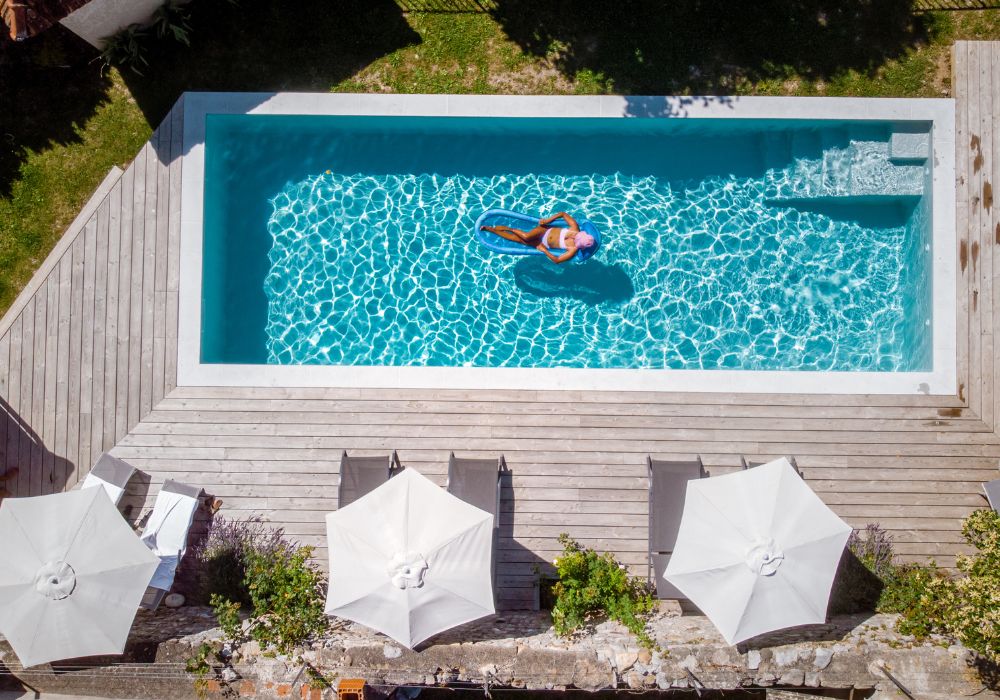Maximizing the area around your swimming pool calls for more than just selecting appropriate flora. It’s about furnishing coherent, useful, and aesthetically pleasing surroundings that improve your outdoor life. Not only for visual appeal but also for enhancing privacy, shade, and the general value of your property, good pool landscaping is vital. This page will go over professional techniques to turn your pool area into a gorgeous and useful outdoor refuge.
Contents
Pool Landscaping Basics
Understanding the basics of pool landscaping is crucial for creating a relaxing and functional area around your swimming pool. The first step involves selecting the right plants and designing a layout that optimizes your space while enhancing the pool’s visual appeal and functionality.
It’s important to consider how each plant, shrub, or tree will interact with the pool environment, including potential debris and root systems that might interfere with underground plumbing. Effective pool landscaping also incorporates elements that ensure privacy and safety, transforming your pool area into a secluded haven for family and friends.
Moreover, the basics of pool landscaping extend beyond plant selection to the overall spatial design. This includes the strategic placement of various plants to create natural windbreaks and shade, without compromising the structural integrity of the pool.
Additionally, considering how the landscaping will look throughout the different seasons ensures year-round beauty and utility. By adhering to these foundational principles, you can set the stage for a more detailed and personalized landscaping project that not only complements your home but also enhances your outdoor living experience.
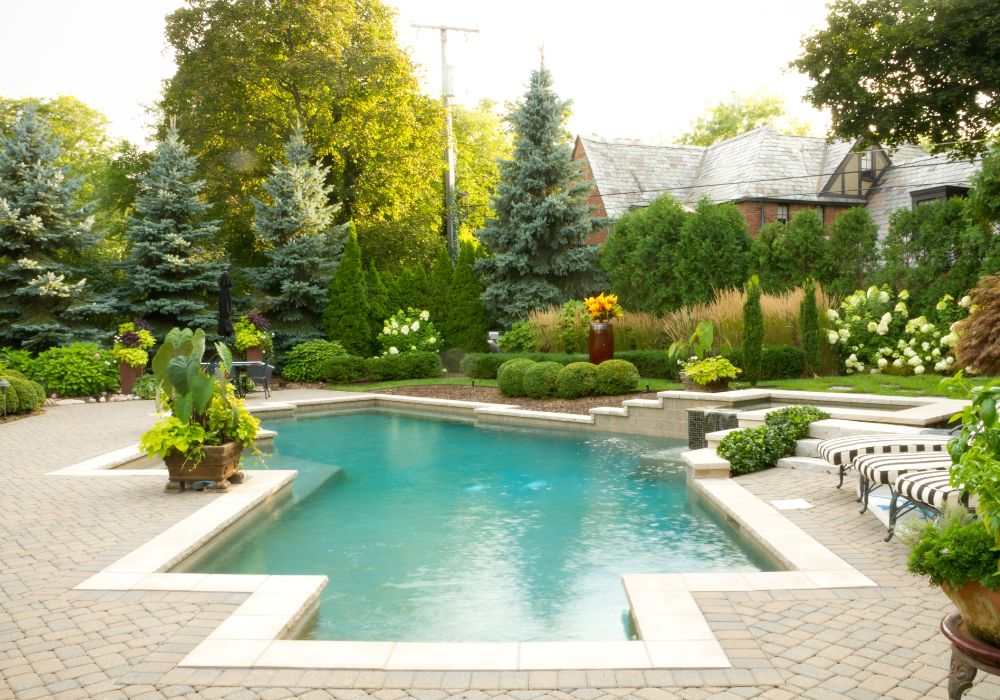
Design Elements to Enhance Your Pool Area
Enhancing your pool area through thoughtful design elements is a crucial aspect of pool landscaping. It involves not just the addition of plants and greenery but also incorporating various architectural and decor elements that complement the pool and its surroundings. This holistic approach ensures that the pool area is not only functional but also aesthetically pleasing.
Below, we explore several key design elements that can significantly elevate your pool landscaping.
Integrating Hardscaping with Softscaping
Combining hardscaping elements like patios, walkways, and retaining walls with the soft textures of lush grass and vibrant plants can create a dynamic and visually appealing pool landscape. Hardscaping provides structure and defines the layout, while softscaping brings color, life, and softness.
The balance between these two can make your pool area look more sophisticated and well-planned. For example, using natural stone for pathways and surrounding these with flowering plants or soft ornamental grasses can enhance both beauty and functionality.
Selecting Furniture and Fixtures
Choosing the right furniture and fixtures is vital for making your pool area comfortable and inviting. Consider materials that withstand the elements, like teak wood or powder-coated metal, and ensure that the style complements the overall theme of your pool landscaping.
Functional items such as waterproof lounges, umbrellas, and an outdoor dining set not only serve a practical purpose but also contribute to the aesthetic of your space. Additionally, integrating outdoor art pieces or decorative tiles can add unique touches that reflect your personal style.
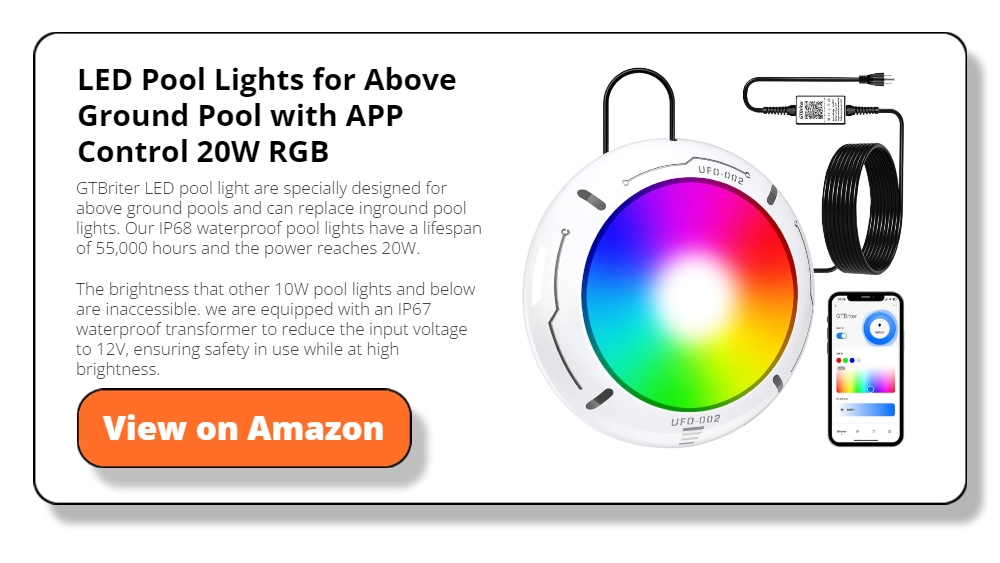
Lighting Options
Proper lighting is essential for extending the usability of your pool area into the evening and enhancing safety. LED pool lights, solar path lights, and strategic spotlighting can illuminate your pool landscaping beautifully, creating an enchanting atmosphere after sundown.
Consider layering different types of lighting, such as ambient, task, and accent lighting, to achieve both aesthetic and functional outcomes. For instance, ambient lighting can set the mood, task lighting can illuminate areas of activity like cooking spaces, and accent lighting can highlight architectural features or plants.
Pool Landscaping for Privacy
Privacy is a significant concern in pool landscaping. Using design elements like lattice fences, tall hedges, or vertical gardens not only ensures privacy but also adds to the greenery of your space.
These features can shield your pool area from prying eyes while contributing to a more secluded and intimate environment. For added texture and color, consider climbing plants such as ivy or jasmine, which can beautifully adorn these structures.
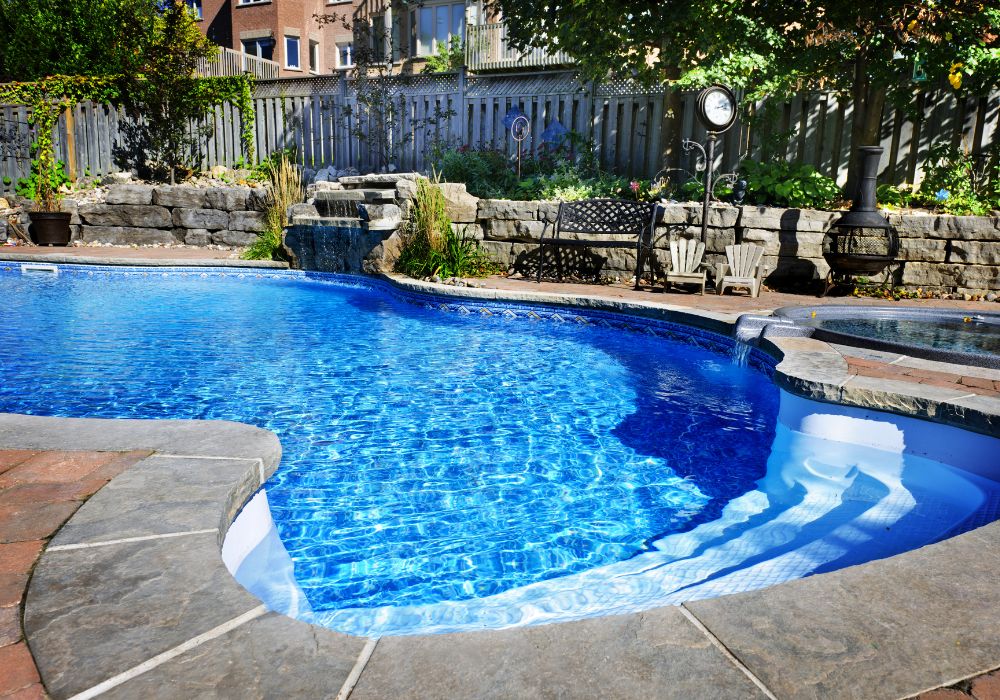
Enhancing Visual Appeal
The visual appeal of your pool area can be significantly enhanced through the careful selection of color schemes and material finishes in your pool landscaping. Choose colors that complement the exterior of your home and existing structures. Integrating decorative pools, mosaic tiles, or even a small waterfall can add a focal point and movement to the space, making it more lively and inviting.
By carefully considering these design elements, you can transform your pool area into a functional, beautiful, and cohesive part of your home’s landscape. Effective pool landscaping is about creating a balance that serves both aesthetic and practical purposes, ensuring that your outdoor space is not only stunning but also enhances your overall living experience.
Plant Selection for Pool Landscaping
Choosing the right plants for your pool area is an essential component of pool landscaping, impacting both the aesthetics and the functionality of the space. Plants not only add life and color but also contribute to the overall ambiance, providing shade, privacy, and even fragrance.
Let’s explore some of the best choices for poolside planting, as well as some types to avoid to ensure your pool remains a pristine and welcoming oasis.
Best Plants for Poolside Locations
Selecting plants that thrive in poolside conditions means considering their tolerance to splashes of chlorinated water, their debris factor, and their root systems. Ideal plants for pool landscaping are typically low-maintenance, non-invasive, and able to withstand the microclimate around your pool. Palm trees like the Areca Palm or Sago Palm are excellent for adding tropical flair without too much leaf litter.
Ornamental grasses such as Blue Fescue or Maiden Grass provide soft textures and movement, and they hold up well against pool water. For ground cover, creeping Jenny and stonecrop sedum are hardy choices that fill spaces beautifully and control erosion.
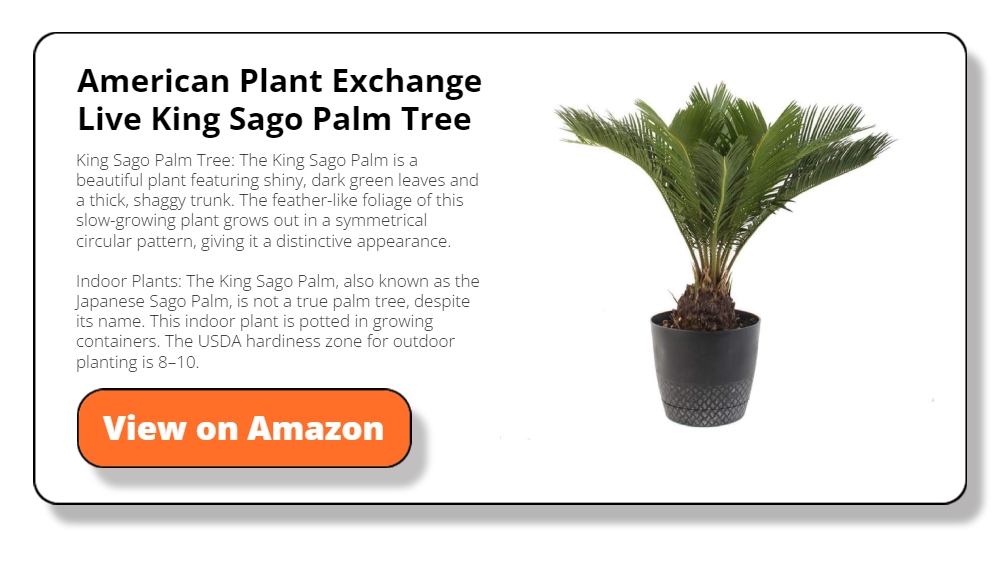
Plants to Avoid Around the Pool
Some plants can create more maintenance issues for pool owners due to excessive debris, invasive roots, or other problematic traits. It’s wise to avoid deciduous trees that shed leaves, needles, fruits, or flowers, as these can clog filters and skimmers.
Trees like birches, willows, and cottonwoods are known for their invasive root systems that can damage pool structures and underground plumbing. Additionally, plants with thorns or spines, such as roses or barberry, should be kept away from pool areas to prevent injuries.
Tips for Maintaining Pool-Friendly Plants
Maintaining plants around your pool area involves regular pruning and choosing the right soil and fertilizers that won’t contaminate the pool water. Use mulch to help retain soil moisture and reduce weed growth, but avoid types that can wash into the pool easily, like fine barks or peat moss.
Opt for organic or slow-release fertilizers that are less likely to runoff and affect water quality. Regularly checking plants for pests and diseases can keep them healthy and prevent any infestations from becoming severe.
Integrating Plant Features for Enhanced Pool Landscaping
Beyond the practical considerations of choosing pool-friendly plants, consider how these plants can enhance the visual appeal and utility of your pool area. Strategic placement of taller plants or trees can provide natural shade during hot days, reducing the temperature of the water and creating comfortable lounging areas. Flowering plants can add pops of color and pleasant aromas that enhance the sensory experience of your poolside retreat.
Creating a Cohesive Look
To achieve a cohesive look in your pool landscaping, consider the overall design theme of your outdoor space. Use plants to create harmonious lines and visual interest that lead the eye around the area.
Group plants with similar needs together to streamline maintenance and create a more organized appearance. Incorporating layers of varying heights and textures can also add depth and richness to the landscape.
Selecting the right plants for your pool area is more than just choosing the most attractive options; it’s about creating a sustainable, functional, and beautiful environment that complements your lifestyle and enhances your outdoor living space. With careful consideration and strategic planning, your pool landscaping can turn into a lush, inviting paradise that beckons for relaxation and enjoyment.
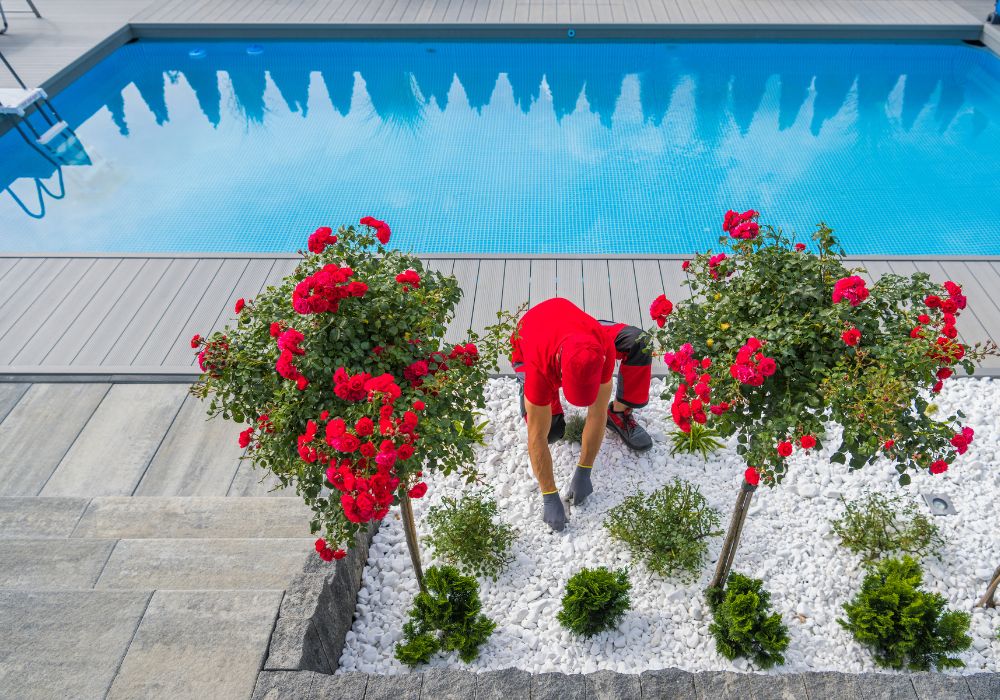
Adding Functional Features
Including functional elements into your pool area will turn it from a basic swimming place into a whole outdoor living space. These elements greatly improve the look of your pool area in addition to its usability. Including outdoor kitchens, fireplaces, and water installations will help you improve your pool landscaping.
Below are the features that can create a flexible and welcoming space ideal for both entertainment and relaxation.
Outdoor Kitchen or Bar Area
One great approach to make poolside events more fun and practical is including an outdoor kitchen or bar. Arrange a refrigerator, a grill, and lots of counter space for food prep in the area. For appliances, think about sturdy materials like stainless steel; for countertops, which can resist outdoor elements, think of granite or concrete. A bar area with stools can also offer a laid-back dining or lounging space, so promoting social interaction and making it simple to pour drinks without ever having to leave the enjoyment of the poolside.
Fire Pit or Fireplace
Including a built-in fireplace or fire pit in your pool landscaping brings a cozy touch that will help you to use the pool area all through the cooler seasons. A great focal point, fire features give guests a comfortable spot to gather around.
From a classic wood-burning pit to a gas-powered fireplace for simplicity of use to a decorative ethanol burner for a more modern touch, you have many choices. Make sure the fire feature is positioned safely, then take wind direction into account to prevent embers and smoke close to the swimming or seating areas.
Water Features
Including water features like fountains, waterfalls, or a flowing brook will improve the sensory experience of your pool area. Moving water not only produces a peaceful atmosphere but also helps to cover background noise from streets or neighbors.
From elegant, modern spouts to naturally occurring streams, water features can be created to complement any landscaping style. Their dynamic element to your pool landscaping also draws wildlife like birds and butterflies.
Outdoor Seating and Shade Structures
Comfort and sun protection depend on correct seating and shade structures. To offer lots of seating for socializing and relaxation, include loungers, daybeds, and modular outdoor sofas.
Large umbrellas, gazebos, or pergolas can provide cover, so increasing the pool area’s usability during hottest sun. Strategically placed trees or big shrubs can be used as a more natural shade solution; nevertheless, leaf drop and root systems should be taken into account in respect to the pool.
Enhanced Accessibility
Making sure everyone can enjoy your pool area depends mostly on its accessibility. This covers setting non-slip surfaces around the pool, adding handrails or steps for simpler access and exit, and making sure there are enough lighting and open paths. If you have mobility problems, think about including a ramp or pool lift to help reach the water.
By carefully including these useful elements into your pool landscaping, you not only maximize the enjoyment and utility of your outdoor area but also raise the general value of your house. These improvements transform your pool area from a swimming venue into a year-round center of activity and enjoyment.
Sustainable Pool Landscaping Practices
Not only does sustainable pool landscaping help the environment, but it also guarantees that your outdoor area is low maintenance, reasonably priced, and efficient. Including environmentally friendly options into your pool area design will help you to lower your environmental impact and produce a lovely and useful outdoor living space.
Let’s look at some main ideas to help your pool landscaping be more environmentally friendly.
Using Native Plants
One of the best strategies to improve sustainability is including native plants into your pool landscaping. Compared to non-native species, these plants demand less water, less fertilizers, and less maintenance since they are suited to your local temperature and soil conditions.
Moreover, native plants support the preservation of your area’s natural biodiversity and offer vital homes for nearby animals. Selecting appropriate native plants will greatly cut the resource consumption of your landscape while yet adding beauty and color.
Water-Saving Irrigation Systems
Using effective irrigation systems will help to significantly cut the water consumption needed to keep your pool landscape looking great. By delivering water straight to plant bases, drip irrigation systems reduce runoff and evaporation.
Additionally helping to save water are smart irrigation controllers that change watering plans depending on the state of the weather. These systems guarantee that plants get just the correct moisture level without waste, so your pool landscaping is both environmentally friendly and cost-effective.
Eco-Friendly Materials
The environment can be greatly improved by selecting sustainable materials for hardscaping components including walkways, patios, and decking. Great choices that lower the carbon footprint connected with transportation and help to meet raw material demand are recycled plastic, reclaimed wood, and locally sourced stones.
Furthermore, permeable paving materials let rainwater flow through and replenish groundwater rather than running off into drains, so lowering erosion and improving water quality.
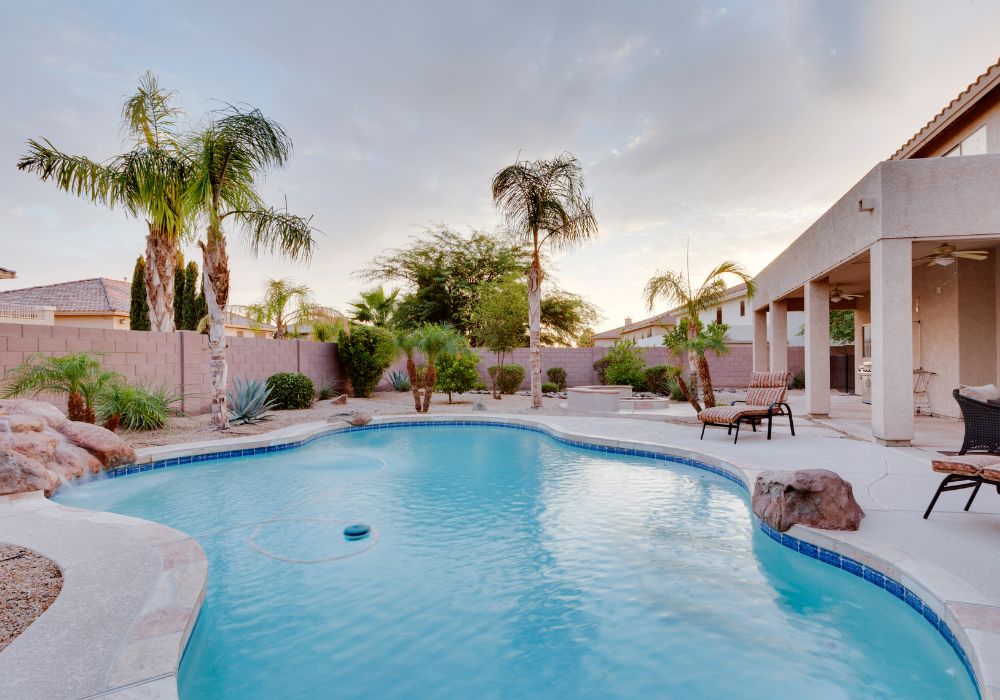
Solar Lighting
One amazing approach to light your pool area without running more electricity is with solar lighting. Solar panels enable these lights to charge during the day and turn on automatically at dusk.
Appropriate for everything from path marking to feature lighting, solar lighting comes in many forms and intensities. Choosing solar instead of traditional lighting not only saves energy but also helps you avoid the trouble of wiring and the expenses connected with electrical installations.
Organic and Natural Pool Treatments
Conventional pool chemicals can be quite detrimental to swimmers and the surroundings. Choosing natural and organic pool treatments will help to lower the dangerous chemical emissions into the surroundings. Effective substitutes with less environmental impact that maintain pool water clean and clear are mineral packs, ozone purification systems, and saltwater pools. These systems can also be milder on the skin and eyes, so improving the swimming enjoyment.
Using these sustainable pool landscaping techniques will help your outside space become a green refuge. These ideas not only help to create a better surroundings but also provide long-term savings and advantages, so improving the enjoyment of your pool area and reducing its maintenance load.
Troubleshooting Common Pool Landscaping Challenges
Troubleshooting common challenges in pool landscaping is crucial for maintaining the functionality and aesthetics of your outdoor space. Pool areas can present unique issues due to their exposure to water, chemicals, and varying weather conditions. Addressing these challenges effectively can ensure that your pool remains a beautiful and enjoyable part of your home.
Here’s how to navigate some of the most frequent obstacles encountered in pool landscaping.
Dealing with Limited Space
Maximizing a small pool area requires strategic planning and creative design. Utilizing vertical spaces for planting, choosing compact furniture, and implementing built-in features can make a significant difference. Opt for multi-functional elements like benches with built-in storage or drop-down tables. Also, a minimalist approach to plant selection—focusing on a few dramatic, space-efficient plants—can prevent the area from feeling cluttered.
Managing Shade and Sun Exposure
Balancing shade and sun exposure is vital for comfort and plant health around the pool. If your pool area is overly sunny, consider installing shade structures like pergolas or umbrellas. Alternatively, strategically placed trees can provide natural shade and cooling effects, though it’s important to choose species that don’t drop leaves or debris into the pool. For areas with too much shade, select shade-tolerant plants that thrive without direct sunlight, and use reflective surfaces to brighten dark corners.
Overcoming Soil and Drainage Issues
Poor soil and inadequate drainage can wreak havoc on pool landscaping. To improve soil quality, amend it with organic matter which can enhance nutrient content and water retention. If drainage is a problem, consider installing a French drain system or elevating plant beds to prevent waterlogging. Properly grading the landscape around your pool can also direct water away from the pool and buildings, minimizing potential damage.
Handling Chemical Exposure
Plants near pools often struggle due to exposure to chlorine and other pool chemicals. Choosing chemical-resistant plants or using physical barriers like glass screens can protect sensitive vegetation. Additionally, regular hosing down of nearby plants can help dilute chemical residues, reducing their impact on plant health.
Controlling Poolside Pests
Pools can attract various pests, including mosquitoes and other insects. To control these pests naturally, plant insect-repellent species such as lavender, marigolds, and citronella near your pool. Maintaining a clean and well-trimmed pool area reduces hiding spots for pests and makes your landscaping less appealing to them.
Navigating these common challenges with thoughtful solutions can greatly enhance the enjoyment and longevity of your pool area. By addressing each issue with appropriate strategies, you can ensure your pool landscaping remains as functional and attractive as possible.
Conclusion
Good pool landscaping turns your outdoor area into a beautiful and useful oasis, so improving the appearance and use of your house. Careful planning and appropriate design elements will help you overcome typical landscaping problems and design a pool area that satisfies all your entertainment and relaxation requirements. Use these ideas to make sure your poolside is as welcoming and fun as it could be.

